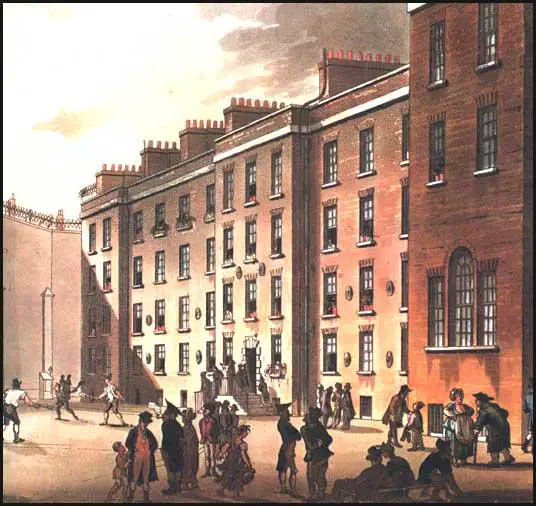Fleet Prison (original) (raw)
- British History >
- London >
- Fleet Prison
Fleet Prison was situated off Faringdon Road and is now occupied by Caronne House. The prison was named after a river that flowed outside the prison walls. Originally built in 1197 the prison was destroyed three times: Peasants' Revolt (1381), the Great Fire (1666) and the Gordon Riots (1780). In the 1750s Fleet Prison was mainly used for debtors and bankrupts. It usually contained some 300 prisoners and their families. Some inmates were forced to beg from their cells that overlooked the street, in order to pay for their keep. Fleet Prison is described by Charles Dickens in his novel The Pickwick Papers and was featured in The Rake's Progress by William Hogarth. Fleet Prison was demolished in 1846.

Rudolf Ackermann, Fleet Prison, from Microcosm of London (1808)
Primary Sources
(1) William Pyne, The Microcosm of London (1808)
The court into which you enter is the whole length of the building which is about 90 feet. Passing through the lobby, you enter the inner court, where the prisoners entertain themselves with tennis fives, and other amusements, as represented in the print. The keeper is called the warden of the Fleet, and his fees from the prisoners for turning the key, for chamber rent, etc. and this amounts to a considerable sum.